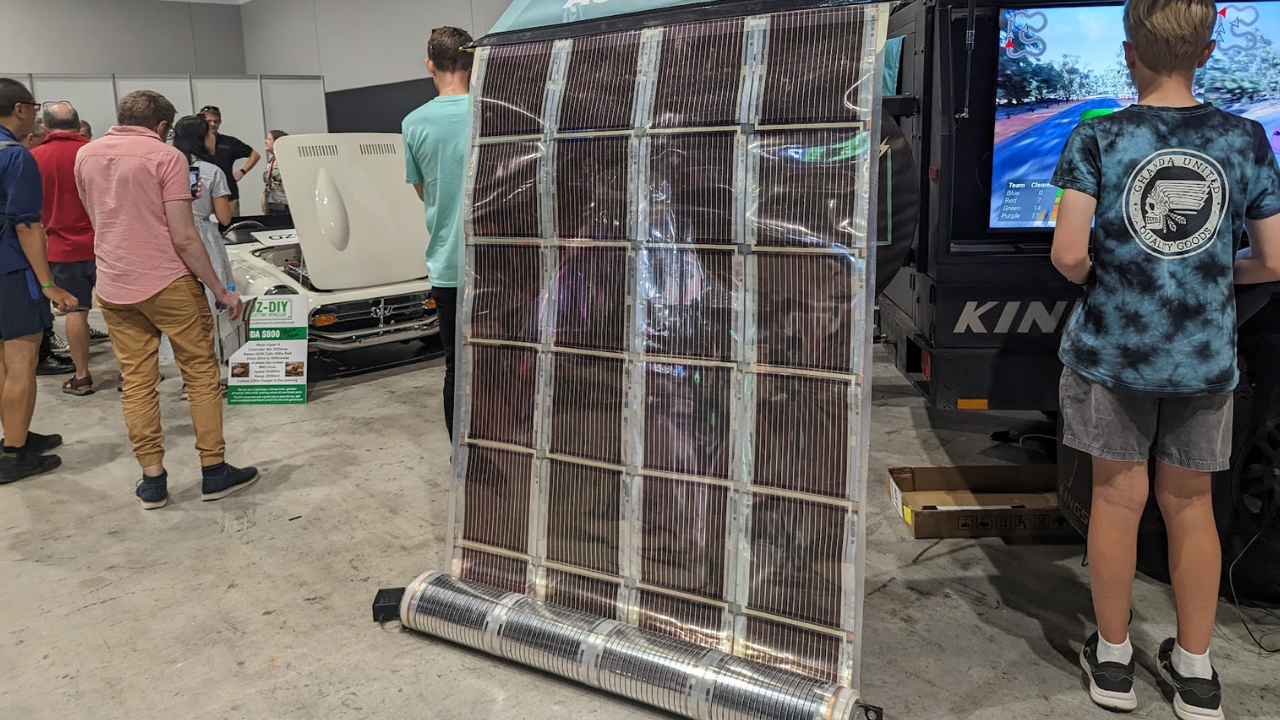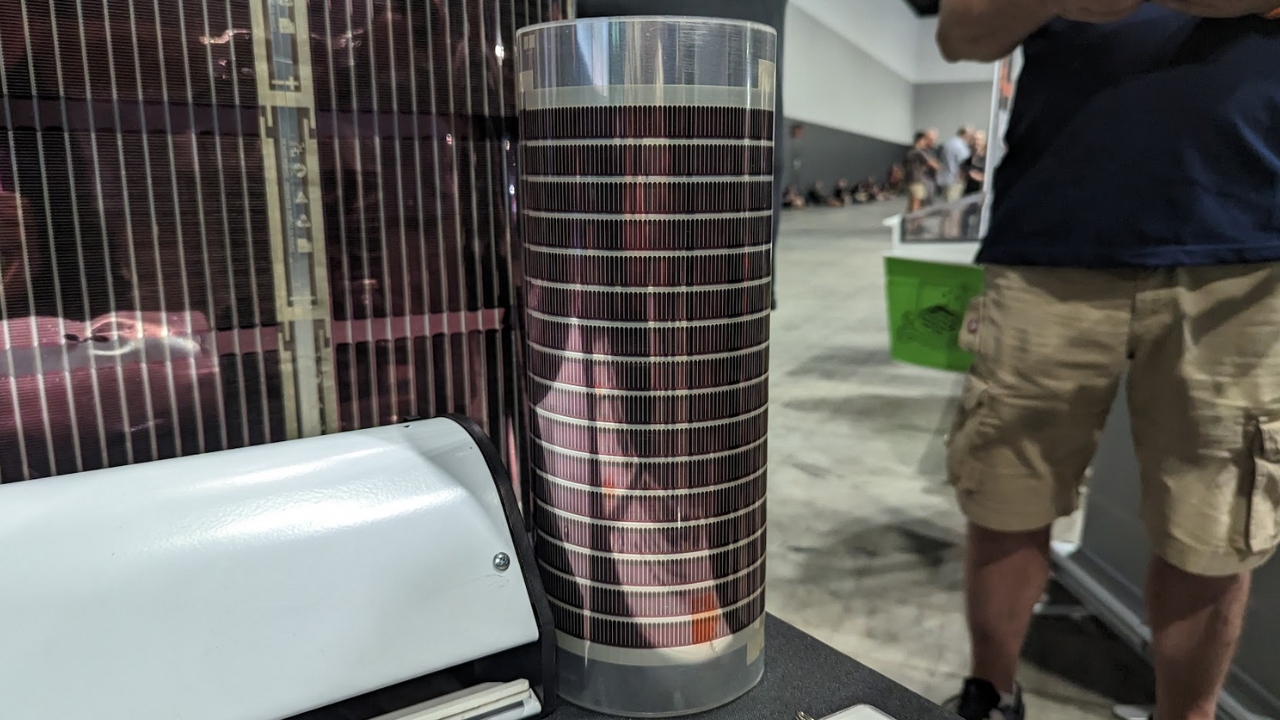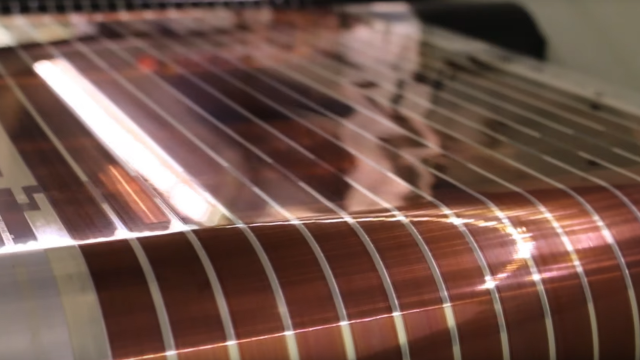Solar energy is something that is being adopted as we transition away from fossil fuels, but it’s typically cumbersome, large, and not accessibly priced for all users. But, what if you could make cheap and lightweight printed solar panels?
The tech comes from the University of Newcastle, and we’ve covered it before, focusing on the tech being used on a road trip around Australia (which has now been completed) and the first commercial installation of the technology.
“The solar panels are very cheap to make,” Newcastle University’s Doctor Michael Dickinson told Gizmodo Australia. “They’re basically a chip packet with a layer of organic ink on it that you can actually convert into a power source.
“It’s a very different way of looking at how to make a solar cell, because mostly you’re using solid silicon. This is using organic electronics and it’s different. It’s not really competing with solid silicon solar cells – these are transportable but they’re not as powerful.”
In person, these solar panels are quite amazing to look at. At the team’s stall at Sydney’s Fully Charged EV exhibition, they had the solar panels printed out in cylindrical reams, showing just how portable the technology is. Additionally, the team was exhibiting the printer that produces these panels, along with the ink that’s used in the process.

It’s all recyclable and non-toxic, with one of the team members recently developing a way to scrub off the ink and reuse the silver that’s placed on the panels.
The panels are obviously not going to be competing with larger, more powerful and more permanent installation-oriented solar panels, but with a much lower cost of production ($10 per square metre) and an easy deployment process that’s only inhibited by available space (without the need to make deliberated fixtures on roofs), there’s a very obvious use case for this tech.
We asked Dickinson how many of these printed solar panels it would need to charge a Tesla Model 3 to 80 per cent, considering that earlier mentioned road trip around Australia. He told us it would require 18 fully functioning panels – which translates to “about half a football field” in space required across 10 hours.
To do this for the Charge Around Australia project, the team got in touch with schools across Australia to ask if they could lay solar panels out on their open fields. While doing this, the team delivered a STEM project to the schools, running kids through how solar energy works while also letting them play video games in a transported trailer.
“It was about doing a field trial, just to see how printed solar actually fares in the real world,” Charge Around Australia’s Stuart McBain told Gizmodo Australia.
But this is an extreme example of the tech. While it’s noticeably inefficient when charging an electric vehicle battery, Dickinson said its advantage is that it can be simply chucked in a backpack and taken to wherever it needs to go.

“It is very useful in remote areas where you’ve got to get it in and you’ve got a lot of space,” Dickinson added.
The team has been working on the technology for 10 years now, though the work is not over yet. Dickinson said that the team is working with a startup that’s trying to establish a “big enough factory” to build large volumes of the panels. Meanwhile, the team is developing new inks that have higher efficiencies.
Dickinson said that in 10 years the technology could be seen in emergency work and disaster relief, or placed on structures that can’t handle the weight of a normal solar panel.
It’s an impressive technology that I definitely hope to see more of in the future.
